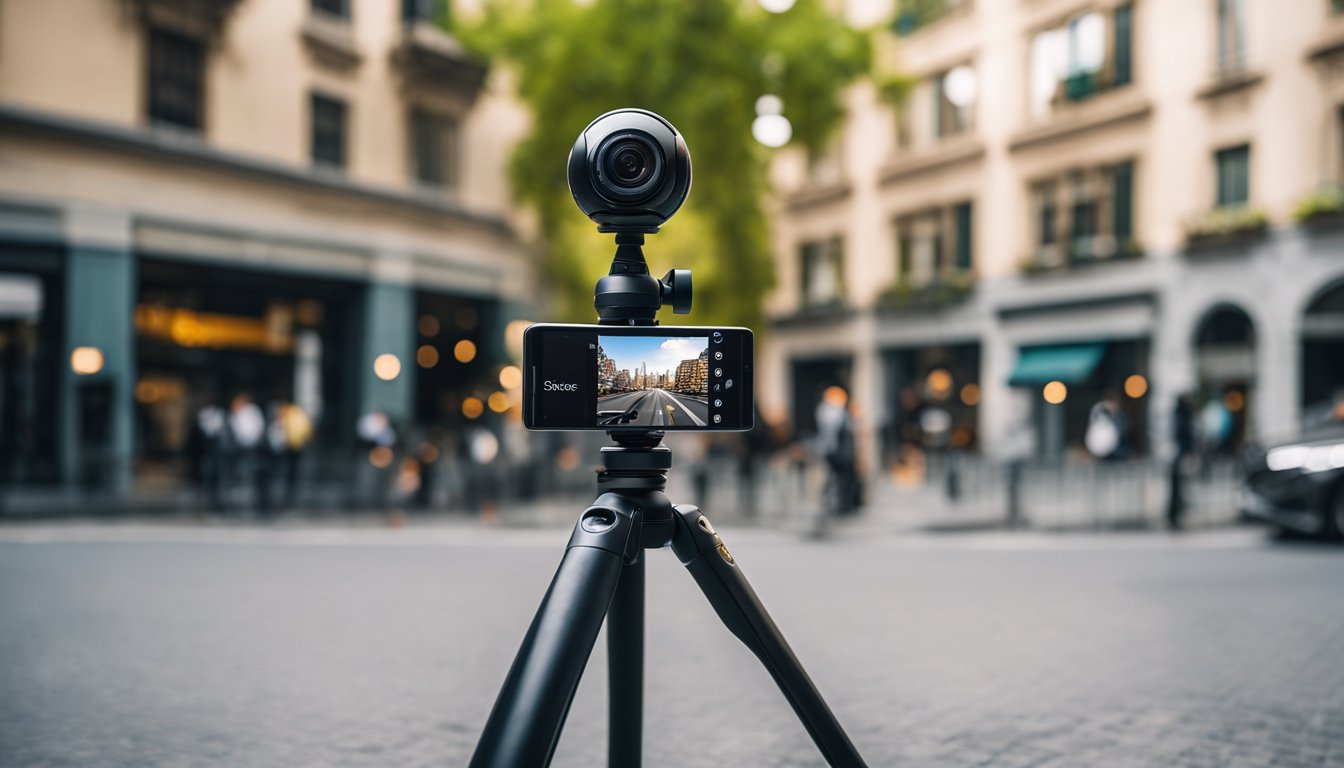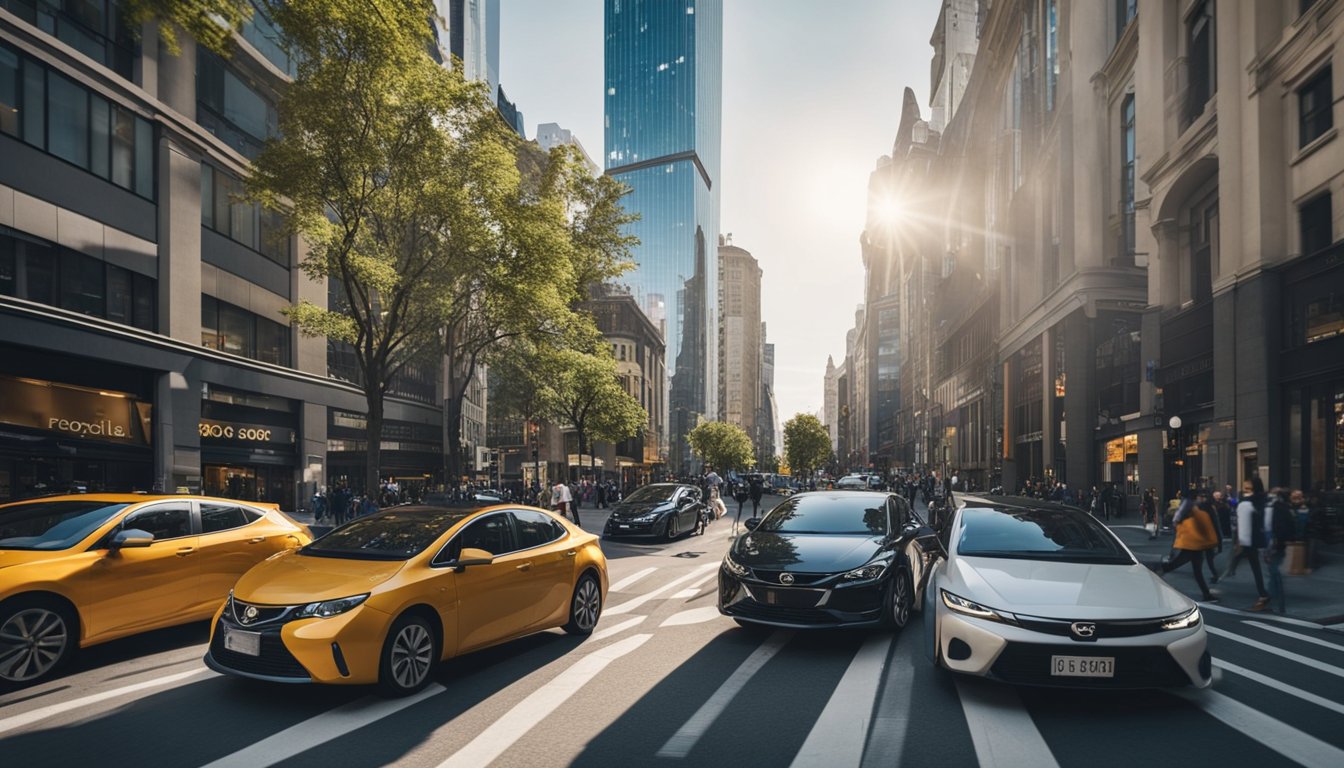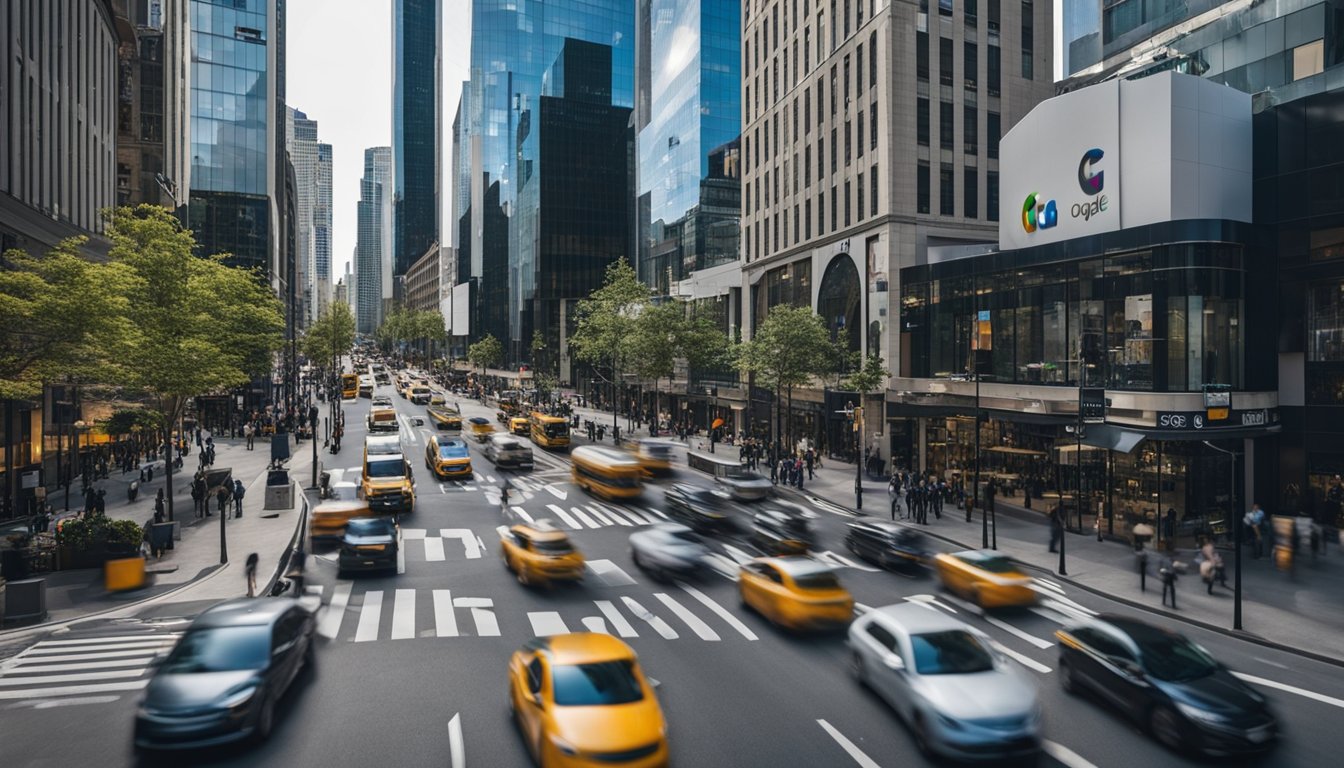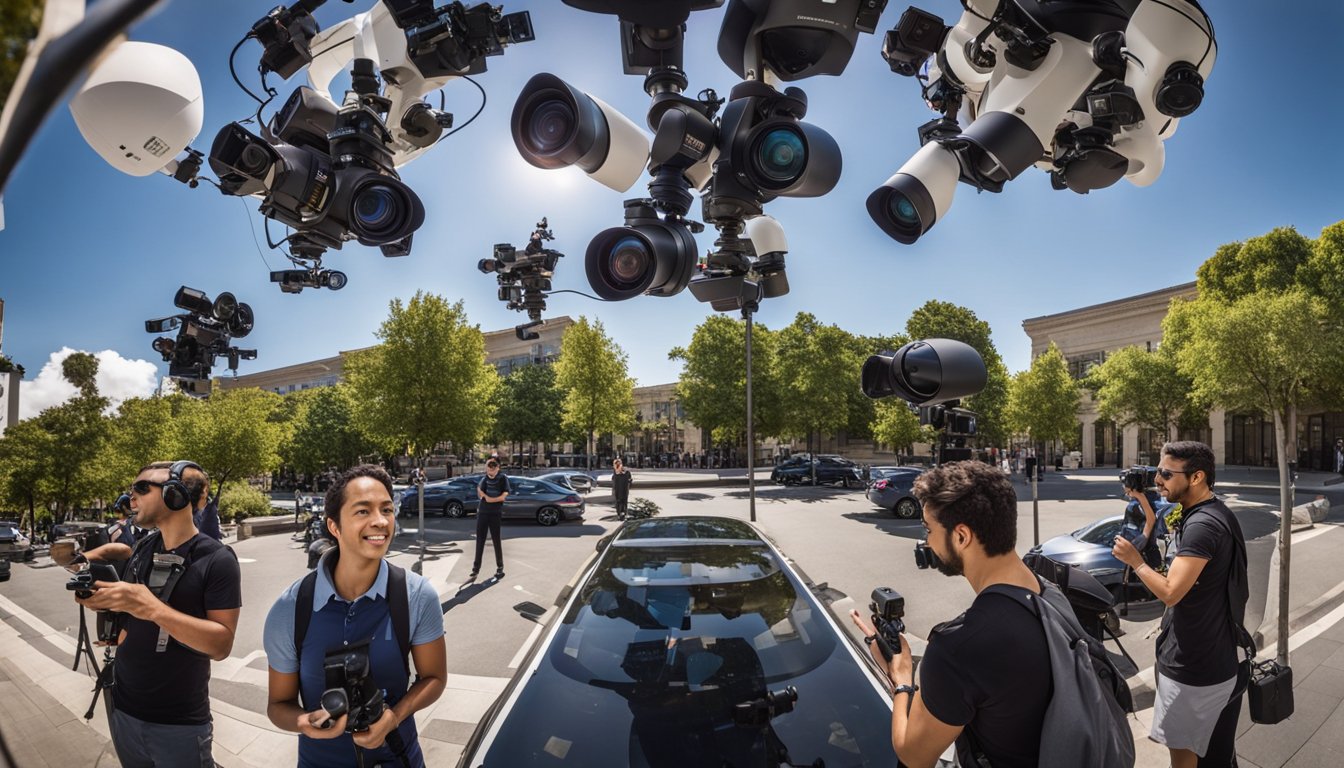Capturing panoramic images for Google Street View is an exciting way to share the world around us. Google Street View offers a unique platform where essentially anyone can contribute their own 360-degree images. Choosing the best 360 camera for this task requires understanding the technology’s compatibility with Google’s platform, the camera features that enhance image quality, and how easy it is to upload content to Street View. Whether you’re a professional photographer or an enthusiast eager to showcase your local neighborhood, owning the right camera makes the process seamless and enjoyable.

360-degree cameras have come a long way, with options ranging from consumer-friendly models to high-end professional gear. While considering a camera for Street View, it’s important to look for devices that are Street View-ready certified; this certification ensures they work well with Google’s service. Features like high resolution, good stitching capabilities, dynamic range, and ease of use should be at the top of your checklist. Additionally, the ability to publish directly to Street View and the availability of supporting tools can greatly enhance your photography experience.
Key Takeaways
- Selecting a Google Street View-compatible 360 camera requires research on certification and features.
- High resolution and image stitching quality are crucial for clear, immersive Street View imagery.
- Direct publishing capabilities and supportive accessories enhance the Street View user experience.
Understanding 360 Cameras
When you’re diving into the world of 360-degree cameras, two key things you should understand are the types available and how these innovative cameras function to capture immersive content.
Types of 360 Cameras
Consumer 360 Cameras: These are typically compact, budget-friendly options perfect for casual users. They offer a simple, all-in-one solution for capturing 360 images and videos, often with a push of a button. For example, the Insta360 line features user-friendly cameras suitable for Google Street View photography, as noted on threesixtycameras.com.
Professional 360 Cameras: These cameras are designed for high-quality image and video production. They may include features like high resolution, superior image quality, and the ability to shoot in RAW formats. Cameras like the Insta360 Pro2 and Insta360 Titan fall into this category, with gear specifically aimed at pros listed on Google Maps Help.
How 360 Cameras Work
360-degree cameras capture the world around you in all directions. Here’s how:

-
Multiple Lenses: They utilize two or more lenses to cover a 360-degree field of view. Each lens captures a portion of the scene, which is then stitched together by the camera’s software to create a seamless image or video.
-
Stitching Software: This software is integral to producing a cohesive VR experience. It blends the images from each camera lens, correcting any overlapping areas to ensure there are no gaps in the final picture.
-
Resolution and Image Quality: The clarity of your 360 photos and videos largely depends on the camera’s resolution. Higher resolution means more detail, making the Kandao QooCam 8K a stand-out choice for its 8K video capability.
By understanding these basics, you’re better prepared to choose a 360 camera that matches your needs, whether you’re looking to create content for VR, capture high-resolution images, or contribute to platforms like Google Street View.
Top 360 Cameras for Google Street View
When capturing expansive panoramas for Google Street View, the camera choice is essential. You need a device that is Street View-ready for seamless integration with Google’s platform.
Insta360’s Range
The Insta360 cameras, like the Pro 2, are designed for professional use and can capture ultra-high-quality imagery suitable for Google Street View in up to 8K resolution. They are known for their lightweight design, making them convenient for all terrains, with models like the Insta360 Titan offering up to 11K resolution.
Ricoh Theta Series
For those who prefer a balance between quality and ease of use, the Ricoh Theta V is a commendable choice, praised for its excellent quality photos and compatibility with the Street View app. Upgrading to the Ricoh Theta Z1, you get improved sensors and HDR rendering, giving you more detailed images.
Samsung Gear 360 Insights
Samsung also offers an entry in this niche with its Samsung Gear 360 camera, known for its compact size and user-friendly interface. This camera is a good option if you’re starting with 360 photography and need a device that is easy to take with you on the go.
Giroptic’s Cameras
Lastly, Giroptic has made strides with cameras like the Giroptic IO, which is a portable and easy to use camera that connects directly to your smartphone. This camera is a great starting point if you’re new to 360 photography and want a device that simplifies the capture and upload process to Google Street View.
Street View Compatibility

« How to Make Money with a 360 Camera: Profit from Every Angle
360 Cameras for Parties: Capture Every Angle of Your Fun Event! »
When selecting your Street View 360 camera, compatibility with the Street View app is essential. These cameras allow you to capture 360-degree images and upload them directly to Google Street View, contributing to the global Street View database.
- Seamless Integration: Ensure that the camera you choose works flawlessly with the Street View app. This integration allows for a direct upload without the need for complicated workflows.
- High-Resolution Images: Google Street View thrives on clear and detailed images. Opt for a camera that offers high-resolution capture capabilities, like those with 8K output for intricate detail.
- Ease of Use: The camera should be user-friendly. Look for features such as one-click capture and quick connectivity to your smartphone.
Here’s a brief list of features to check for optimal compatibility:
| Feature | Why It Matters |
|---|---|
| Resolution | Higher resolution means clearer, more immersive Street View images. |
| Connectivity | Wi-Fi or Bluetooth compatibility ensures easy communication with the Street View app. |
| Single-click capture | Streamlines the process of capturing and uploading your images. |
| Portability | Lighter and more compact cameras make capturing Street View content on the go easier. |
| Durability | A robust camera will handle the variabilities of outdoor environments. |
Selecting a camera that meets these criteria will enhance your experience with Google Street View and make it easier to share the world as you see it. Whether you’re capturing landscapes or city scenes, your contributions using a compatible Street View 360 camera are valuable for users across the globe looking to explore new places.
Camera Features for Street View

When you’re picking a camera for Google Street View, you want to ensure it has specific features to make your images stand out. These include accurate GPS integration, exceptional image quality, and robust durability for outdoor usage.
GPS Integration
Your camera’s GPS integration ensures that the images you capture are accurately geotagged, placing them correctly on the map. This is essential for creating a seamless Street View experience. Cameras like the Insta360 models are designed to automatically record location data along with your images.
Image Quality and Resolution
High image quality and resolution are vital for clarity, detail, and an immersive feel in your Street View submissions. You need a camera that can capture images in at least 4K resolution to meet Google’s standards, but options like the Insta360 Pro 2 offer up to 8K video capture which can make a significant difference in the final output.
Durability for Outdoor Use
Since Street View data is often collected outdoors, you’ll need a camera that’s built to withstand various environmental conditions. Look for features such as weather resistance or rugged design to ensure your camera can handle everything from the high heat of city streets to the damp conditions of a rainforest.
Remember, investing in a camera with these key features will help you create Google Street View content that’s not only engaging but also incredibly useful to users worldwide.
Street View Ready Certification

Google’s Street View Ready Certification enables you to publish content directly to Street View. The certification categorizes 360-degree cameras across four different specifications: Mobile Ready, Auto Ready, VR Ready, and Workflow Ready. Each category has specific criteria tailored to the method you use to capture and upload your Street View imagery.
Mobile Ready
Mobile Ready cameras allow you to publish images to Street View directly from a mobile app, streamlining the process of capturing and uploading content. The Street View app ensures compatibility and ease of use for these cameras, which are perfect if you’re looking to contribute on the go.
Auto Ready
Cameras that are Auto Ready are designed for vehicle-based image capture. They need to meet higher precision requirements due to the nature of movement and speed involved. These cameras often have advanced features such as GPS and the ability to capture multiple angles that stitch seamlessly into the vast Street View landscapes.
VR Ready
VR Ready cameras enable you to create immersive content with 3D capabilities. This type of camera not only captures the environment but also depth information which gives a real sense of place when viewed in virtual reality environments. These cameras are essential for creating VR content for Street View.
Workflow Ready
Lastly, Workflow Ready refers to the compatibility with publishing tools that assist in processing and uploading bulk Street View imagery. These tools are important for professional photographers and organizations who require efficient workflows to handle a large number of 360-degree photos efficiently.
Using Your 360 Camera
When using your 360 camera for capturing Google Street View content, it’s essential to understand the correct capture techniques and editing process to produce high-quality VR video and 360-degree images.
Capture Techniques
To capture the best 360-degree images, ensure your camera is mounted securely to either a tripod or a moving vehicle, depending on the type of views you’re aiming to record. For Google Street View Photography, consistency is key, so keep your camera’s lens at a uniform height and use smooth movements if capturing while on the move.
- Stationary Capture: Place your tripod at various strategic points to cover all angles.
- Dynamic Capture: Mount your camera on a vehicle for continuous footage, ensuring the camera stability to prevent blurriness.
Editing and Stitching
After the capture phase, your focus will move to editing and stitching together your 360-degree content to create a seamless VR experience. Some cameras come with proprietary software to streamline this process.
- Initial Editing: Trim your footage to include only the necessary sections.
- Stitching: Use your camera’s software or a recommended application to combine multiple images into a singular 360-degree panorama. Check for errors in alignment or missing patches in the imagery.
By following these specifics, your 360-degree photos and videos will be ready to contribute to the Google Street View platform.
Publishing to Google Street View
When you’re ready to share your 360-degree experiences with the world, publishing to Google Street View can be an exciting step. Your content enhances the platform and helps others explore places with ease.
Street View App Workflow
To get your 360 images on Street View, you’ll use the Street View app. Once you’ve captured imagery with your compatible 360 camera, follow these steps:
- Connect your camera to the app.
- Transfer your photos to your phone.
- Publish your images directly, where they’ll be stitched into the immersive Street View interface.
Remember, no desktop workflow is needed for Street View mobile-ready cameras, making it a smooth process right from your app to the world.
Direct Upload Protocols
For those of you with auto-ready cameras designed for vehicle-based collection, expect the highest accuracy in your uploads. Here’s how it works:
- Ensure your camera is Street View-ready certified.
- Use the provided tools or software from the camera manufacturer to stitch and align your images if needed.
- Upload your content via the Street View Studio or compatible desktop software.
This direct upload approach is more technical and suits professional users aiming for high-quality contributions to the Street View platform.
Practical Tips for Photographers
Embarking on 360-degree photography for Google Street View can be a rewarding experience. With the right approach and equipment, you can capture compelling images that are viewed and appreciated by people worldwide.
Best Practices
When stepping into the role of a professional photographer for Google Street View, it’s crucial to prioritize image quality. Your camera’s resolution and stitching capabilities will determine the seamlessness of your panoramic shots. Regularly update your camera’s firmware to ensure optimal performance. The reputation you build on platforms like Google Street View may lead to nearly 1 million views or more, much like those experienced photographers whose work shines due to their diligence and attention to detail.
In the field, always remember to clearly capture street signs and landmarks—keys to a useful Street View image. Additionally, keeping a consistent height for your camera will result in a uniform look as users navigate through different scenes you’ve captured.
Essential Gear for the Field
Your success in the field hinges on having not just a capable 360-degree camera but also the right accessories. Select a camera from the list of Street View-ready certified 360-degree cameras that match your professional needs. Here’s what you should consider carrying:
- Camera and Cleaning Kit: Dust and smudges can ruin a perfect shot; carry a lens cleaning kit to keep your images spotless.
- Storage Solutions: Ample memory cards are a must, and an external hard drive for backups won’t hurt.
- Tripod: A sturdy tripod empowers you to set up shots with the precision Street View imagery demands.
- Portable Power: Extra batteries or a power bank ensure you don’t run out of juice mid-shoot.
For transporting gear, a comfortable and rugged backpack is essential. The Lowepro PhotoSport Outdoor Backpack and Peak Design Everyday Backpack are favorites that can protect your equipment and provide quick access when you’re on the move.
Remember to prepare for weather changes and landscape challenges; this adaptability is key to shooting successful Street View imagery. Engaging with the Street View Summit or similar events can also enhance your knowledge and skills in this niche field.
Accessories and Supporting Tools
When capturing 360-degree images for Google Street View, the right accessories and supporting tools are essential. Not only do they enhance the functionality and versatility of your 360 camera, but they can protect your equipment and streamline your workflow from shooting to post-production.
Smartphone Accessories
Your smartphone serves as a crucial tool in your Google Street View photography kit. It often acts as a remote control for your camera, so consider investing in a sturdy phone mount or tripod to keep your smartphone secure and hands-free while operating your camera. Additionally, a portable charger can keep your phone powered during long shooting sessions, ensuring you don’t miss any opportunities.
Protective Equipment
Since Street View photography can take you to various environments, protecting your camera is a top priority. Camera cases and lens guards shield your gear from dust, moisture, and scratches. For adventurous terrains, a hard case with foam inserts provides robust protection. Remember to also protect your smartphone with a durable case and maybe even a water-resistant cover, especially when working in unpredictable weather.
Software for Post-Processing
Once you’ve captured your 360-degree content, post-processing software is key for refining your images. For macOS users, Pixelmator Pro is an excellent option, offering a powerful, user-friendly platform to edit photos with precision. For detailed work on your images, a Wacom One 12 Pen Display can enhance your editing accuracy, giving you control over fine adjustments with a stylus pen.
Emerging Trends in 360 Photography
As you dive into the world of 360 photography, you’ll find that it’s more than just capturing a moment; it’s about breathing life into panoramas through technological innovations and interactive elements, especially within the realms of Google Maps and Street View.
Street View’s Technological Advancements
In recent years, Google Street View has made significant technological strides. Street View cars, once the primary agents of capturing 360 imagery, are now complemented by sophisticated 360-degree cameras that individuals can use. These cameras have increased in quality and decreased in price, making them accessible to a broader user base. Google’s certification for these cameras ensures they meet specific standards for use with their platform. The Ricoh Theta V is recognized for its excellent quality and seamless compatibility with the Street View app. Furthermore, Google’s developer website provides necessary tools and guidelines for contributing 360 content, inviting not only professionals but also enthusiastic amateurs to participate.
Interactive Experience Development
The evolution of 360 photography is not just in image capturing, but also in how these images are experienced. Google Street View has evolved, offering users the chance to engage with interactive Street View experiences. This interactivity allows you to explore a location as if you were walking the streets yourself, turning static images into immersive environments. With the integration of user-generated content, the boundaries of Google Maps are constantly expanding. People are contributing to an ever-growing tapestry that allows you to experience remote streets, natural wonders, and hidden alleyways from the comfort of your home. Developers continue to push the envelope, creating tools that enable more detailed and navigable views of the world.
Emerging trends in 360 photography are making vast strides, enhancing how you capture and interact with the world through platforms like Google Street View. The use of cutting-edge cameras and the development of a more immersive experience continue to redefine what’s possible in mapping and virtual tours.
Frequently Asked Questions

In this section, you’ll find concise answers to common questions about 360 cameras for Google Street View, helping you choose the right gear and utilize it effectively.
What are the top rated 360 cameras compatible with Google Street View?
The Ricoh Theta V emerges as a prime choice for its quality and compatibility with Street View. Additionally, cameras labeled as ‘Street View ready’ by Google, like the Insta360 series, are highly rated.
Which affordable 360 cameras work best for creating content on Street View?
For budget-conscious users, cameras such as the Insta360 ONE RS or the GoPro Max offer quality content creation for Street View without breaking the bank.
How do you create VR videos that are compatible with Google Street View?
To create VR videos for Street View, use a ‘Street View ready’ certified camera to capture your footage and then upload it via the Street View app, ensuring it meets Google’s format and presentation standards.
What features should I look for in a 360 camera for Street View photography?
Key features for a Street View camera include high-resolution image capture, seamless app integration, good dynamic range, and image stabilization. It’s also important to look for cameras offering efficient workflow for uploading to Street View.
How can I connect the Insta360 camera with the Street View app?
To connect your Insta360 camera with the Street View app, follow the manufacturer’s user manual to pair the devices, ensuring the camera’s firmware is updated for optimal performance and compatibility.
What are some tips for capturing high-quality Street View images using a 360 camera?
For capturing high-quality images, use a rigid mount for stability, make sure the camera is level on top of your vehicle, and consider the time of day for optimal lighting. Additionally, blur faces and sensitive information for privacy using the Street View app’s editing features.










